SSZT912 october 2017 DRV10983 , DRV10987 , UCC28740
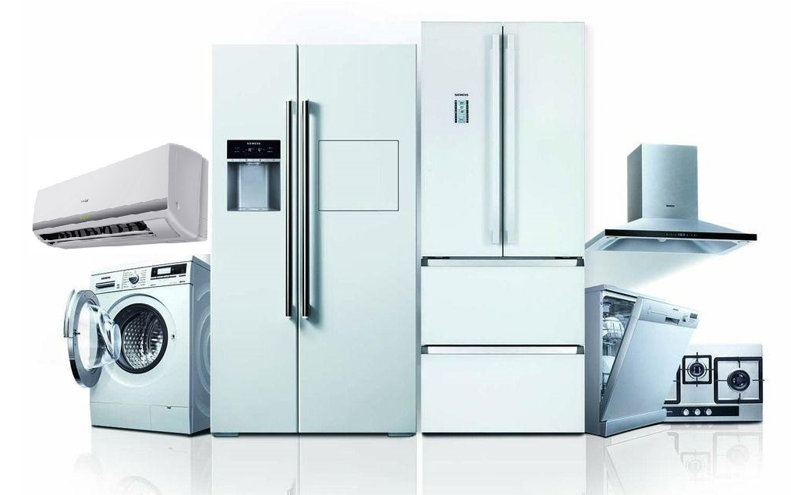
Variable-frequency home appliances such as washing machines, air conditioners and refrigerators are commonly using brushless DC motors (BLDCs). These motors are popular in home appliances because of their high efficiency, low audible noise and stepless speed regulation.
There are still many low-power motors – such as drain pumps in washing machines and dishwashers or fans in air conditioners and refrigerators – that BLDC motors cannot replace completely because of driver design complexity and cost. Because the power of these motors is often less than 50W, developing a BLDC motor driver is too time-consuming even for experienced engineers, and extends time to market as well. TI helps you simplify driver designs by using a highly integrated BLDC motor driver single chip IC which has an embedded proprietary 180 degree sensorless control scheme inside the device. Low-voltage BLDC motors are more suitable for low-power applications instead of high-voltage ones, using a high-voltage solution for a low-power application is like a big horse pulling a small cart. Compared to high-voltage BLDC motors, a low-voltage motor for the pump in your appliance design has these advantages:
- Compatibility. An AC/DC switch power converter enables system operation over universal voltage input conditions (110/220VAC) in different regions.
- Safety. The extra-low-voltage power supply simplifies insulation design for motors, eliminates the risk of insulation breakthrough of the driver board, reduces the risk of electrical shock and is especially suitable for high-humidity environments where drain pumps are located.
- Reliability. Protection features include overcurrent protection, lock detection, voltage surge protection, undervoltage lockout protection, thermal shutdown protection and auto restart. Lower switching and conduction losses make motors easier to control and more efficient.
- Small form factor. The driver board easily fits into the motor, saving printed circuit board (PCB) space. (See Figure 1 & Figure 2)
- Better electromagnetic interference (EMI) performance. The EMI feature enables customers to easily pass EMI testing requirements.
- Cost savings. Low-voltage DC link capacitors are cheaper than their high-voltage counterparts. Sensorless implementations simplify motor assembly; make startup more reliable; and reduce wiring harness, Hall effect sensor and related cable costs.
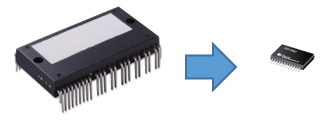 Figure 1 Variation of Driver in
Form Factor
Figure 1 Variation of Driver in
Form Factor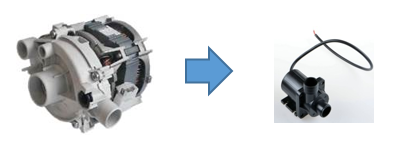 Figure 2 Variation of Motor in Form
Factor
Figure 2 Variation of Motor in Form
FactorOverall, a motor with an integrated small-form-factor driver reduces design complexity, saves R&D time and accelerates time to market.
TI’s Integrated 30-W Sensorless BLDC Motor Drive Retrofit Reference Design with 90- to 265-V AC Input uses low-voltage (24V) BLDC motor drivers instead of high-voltage (above 300V) motors. The reference design provides an optimized compact AC/DC flyback power supply and a highly integrated sinusoidal BLDC motor driver with full protection. Figure 3 shows the system block diagram.
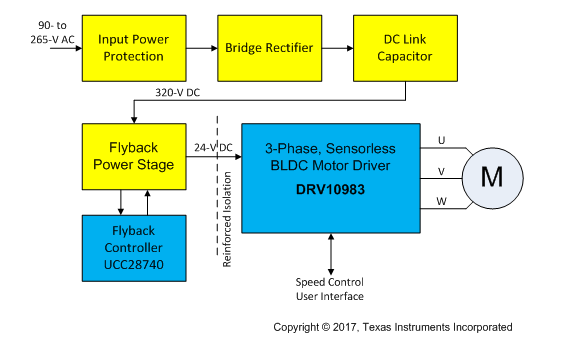 Figure 3 System Block Diagram
Figure 3 System Block DiagramThe reference design’s very small form factor enables integration of the driver board inside the motor and provides a retrofitted solution. The AC/DC flyback power supply converts 90V to 265V, 50Hz or 60Hz AC inputs to a regulated 24VDCoutput with reinforced isolation between the high and low side, with the UCC28740 serving as the AC/DC flyback controller. The designed power output is 36W maximum. The 24VDC generated by the power supply powers the DRV10983 three-phase, sensorless BLDC motor controller, which drives the motor and controls the motor speed. For appliance designs that require wider operating voltage support and enhanced protection features, a BLDC motor driver like DRV10987 can be used 24V systems for different power requirements. You don’t have to be expert on BLDC technology to still develop a BLDC system perfectly. We have many easy-to-use motor drivers that integrate control logic, gate drive and FETs to help minimize the development time, save cost and cut PCB board space.
TI’s proprietary sensorless control scheme to provide continuous sinusoidal drive. This integrated motor control significantly reduces the pure tone acoustics that typically occur as a result of commutation. Figure 4 shows the driving waveform of DRV10983.
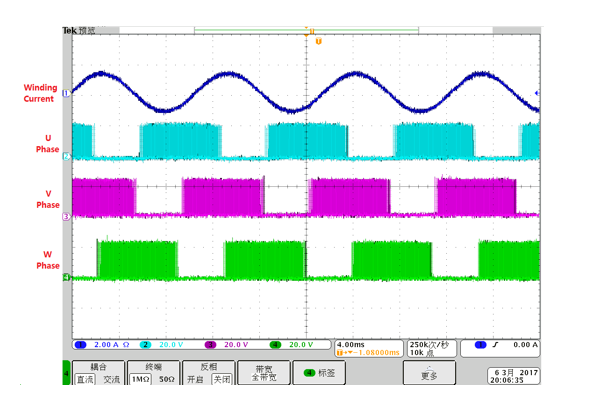 Figure 4 Driving Waveform
Figure 4 Driving WaveformIf you are concerned about the extra switch power cost, you just need to upgrade your previous switch power level from 5W or 10W to 35W; the cost increase is quite limited. The system-level cost is cheaper because smaller motor and driver ICs are cheaper than high-voltage solutions.
Additional Resources
- Find the best solutions for your next-generation appliance designs.
- Watch a training video about sensorless techniques for driving three-phase brushless DC motors.
- Check out our blog series on the integrated intelligence features of TI’s motor drivers.